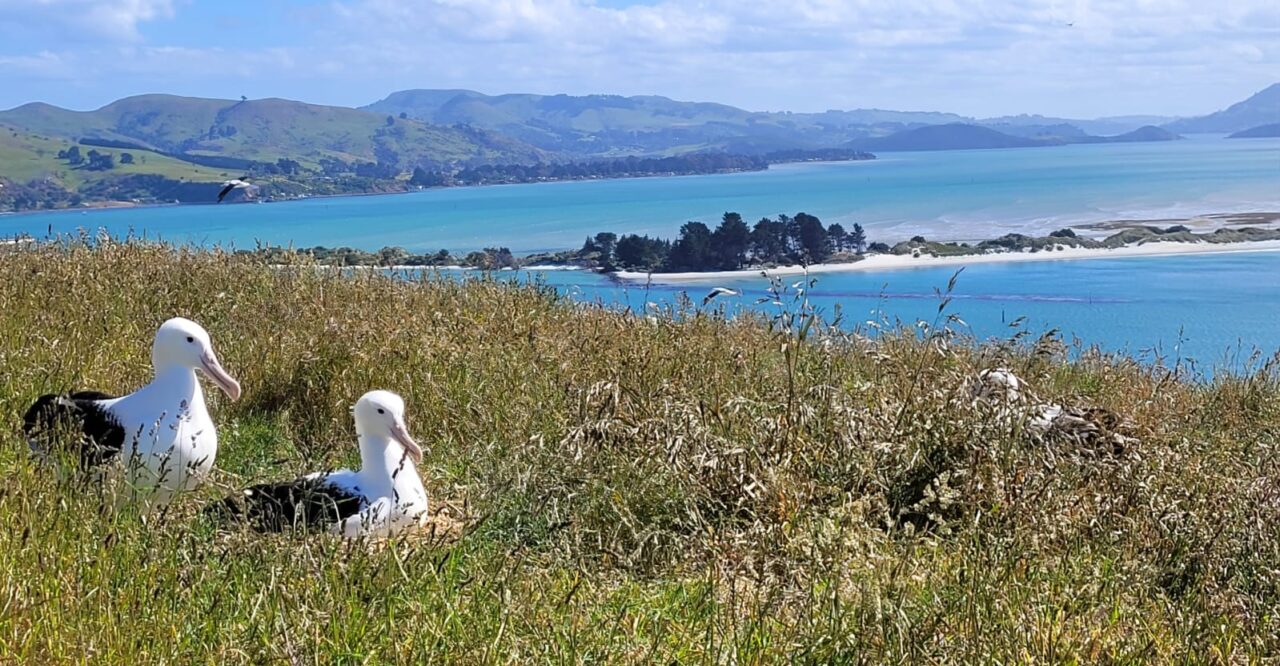2023–24 Royal Albatross Cam Features Two Nests In View
December 14, 2023
Photo credit: Sharyn Broni / DOC
Are you ready for another marathon breeding season with one of the world’s largest seabirds? The Royal Albatross Cam has officially moved to a new location for the 2023–24 season. This season features a special surprise, as it will be the first to feature a double dose of albatross action with two nests in view! Watch live.
Cast Of Characters: The Royal Cam viewing community will be greeted by both familiar and fresh faces this breeding season. Male LGK (named for his colored leg band combination: Lime/Green/Black) and female LGL (Lime/Green/Lime) return to the Top Flat nest site, where they are caring for a single egg laid on November 7. This experienced pair have been together since 2017, and they’ve successfully raised two chicks (Karere and Tiaki) featured on the Royal Cam in past seasons.
Nearby at the Top Flat Track site, male WYL (White/Yellow/Lime) and female BOK (Blue/Orange/Black) have been tending to their egg since it was laid on November 14. These birds were first time breeders last season, but their egg did not hatch. Now in the spotlight of the Royal Cam, we’ll be following their next attempt at raising a chick from hatch to fledge for the first time together.
Read more about the history of these two pairs on the New Zealand Department of Conservation (DOC) website.
Privacy Fence: Currently the Top Flat nest is in clear view on the left-hand-side of the frame, and the Top Flat Track nest is obscured by tall grass to the right. The grass has not been cut between the nests to give the less experienced pair (WYL and BOK) some privacy as they attempt to successfully raise their first chick. According to DOC, creating privacy between neighbors can help minimize stress during nesting for inexperienced pairs. As the season progresses, the tall grass will die down and the view of the nest will open up.
Early Season Activities: Up until the eggs begin to hatch in January, we’ll watch the adults swap incubation shifts at the nest site while their their mates set out to sea to forage. It’s also a busy time for DOC rangers, as they will track the development of the egg by candling them. Learn more about this process and what else you can expect to see during the incubation period in this video, and follow updates on the daily activities at the nest on Twitter/X @RoyAlbatrossCam.

Bird Cams is a free resource
providing a virtual window into the natural world
of birds and funded by donors like you
Pileated Woodpecker by Lin McGrew / Macaulay Library